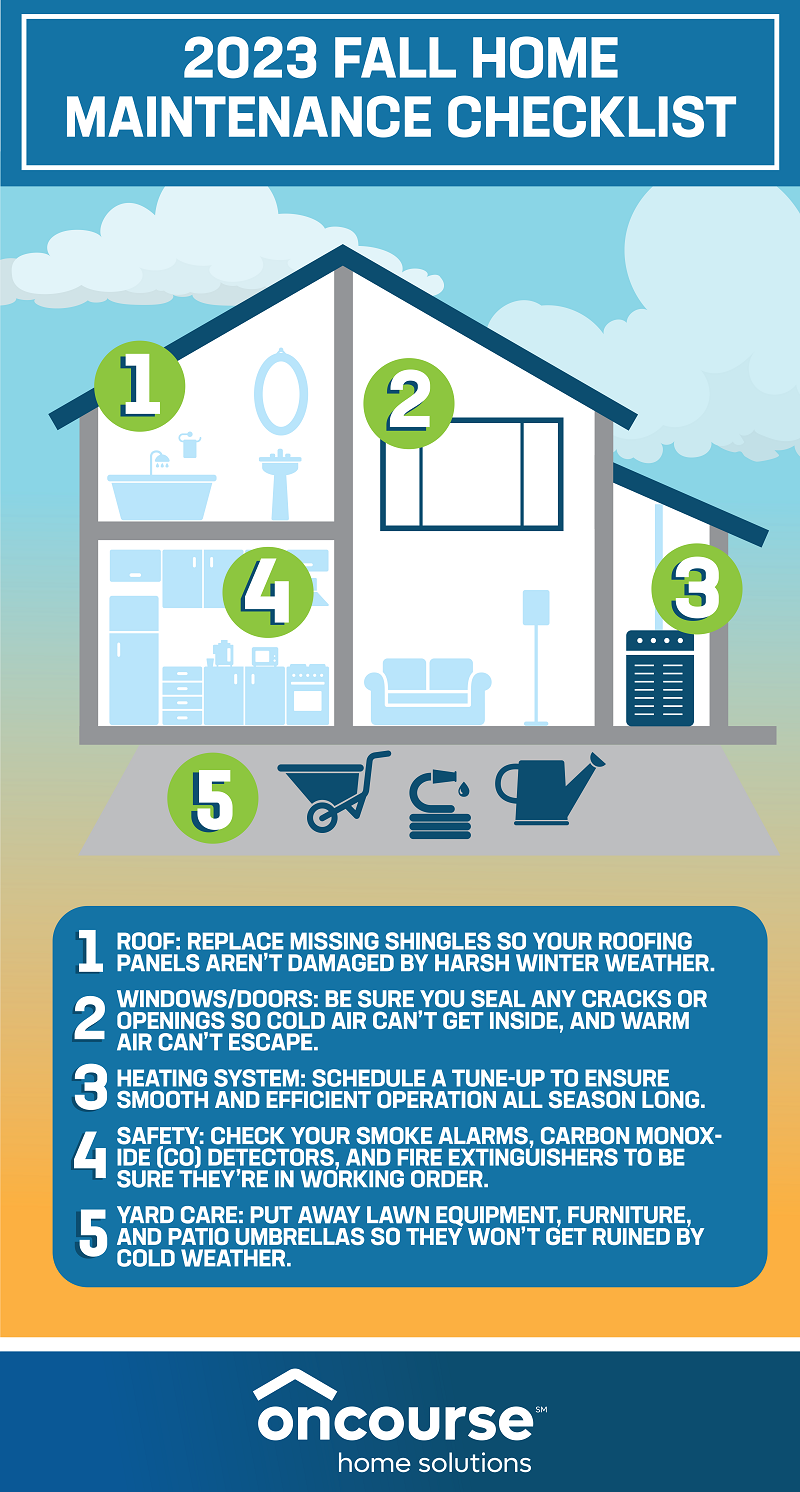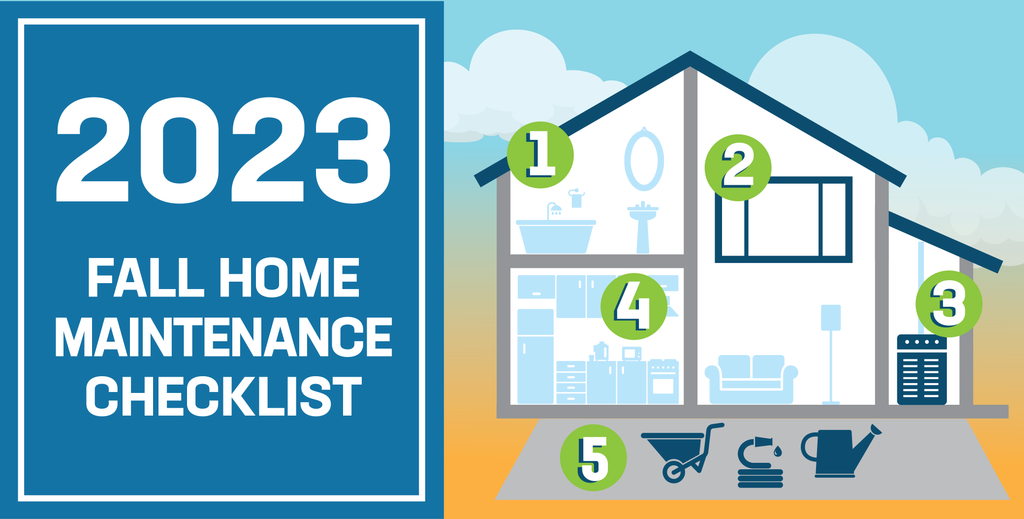Even though the fall season is here, the weather in your area may not feel very “fall-like” just yet, and you may not be thinking about what needs to be done to prepare your home for the cooler weather that will be here before you know it.
To help you prepare your home for the season, we’ve put together some tips. Check them out in the infographic below.

As you can see, there are a lot of areas around your home that you need to be mindful of when getting things prepared for the colder weather ahead.
Heating maintenance
Have your home’s heater maintained by a professional each year. During a tune-up appointment, many potential problems can be caught early and taken care of before they result in an untimely (and expensive) breakdown of your entire system. Additionally, the technician inspecting your heater will ensure that everything is operating efficiently and safely. This means that if you have a heater that’s natural gas-powered, they will check for any potential gas leaks. If your heater operates on electricity, the technician will make sure there isn’t any damaged wiring which could result in a fire or other issues for your system.
When it comes to maintaining your heater, have a trained expert do the tune-up work. However, there’s still some maintenance you should be doing yourself. This includes replacing your air filter monthly, perhaps more often if you have pets or smokers in your home. A dirty filter will prevent conditioned air from being dispersed evenly throughout all rooms and levels of your home. Not just that, but a filter that is full of dirt and dust could jeopardize your family’s indoor air quality.
Windows and doors
Before cold weather arrives, check for areas of air loss around your windows and doors. As time goes by, the seals around your window and door frames weaken. When this happens, cold air from outside can get in, and conditioned warm air from your heater can get out. This will cause some rooms in your home to feel much colder than they should, even with your thermostat set on the temperature your family finds comfortable this time of year.
To determine which areas will need extra sealant, you can perform this simple hand test: Move your hand around the perimeter of your windows and doors and make note of any spots where you can feel cold air coming through. These are the locations where extra weatherstripping will need to be added.
Yard care
Now is the time to store your lawnmower, weed trimmer, and other equipment you use to care for your yard. Put them securely in a shed where they’re covered and out of the elements. If you don’t have a garage or shed to use, put these items in your basement if space is available. Worst case scenario, buy a tarp to place over these items so they don’t get damaged when not in use for several months.
In addition to putting lawn gear away, also put away any furniture you have outside. Again, it’s best to store patio furniture outside of the elements so it doesn’t get damaged and become unsightly or unusable when spring is here next year.
Roofing
Note any areas of your roof with missing or damaged shingles. These will need to get repaired or replaced as soon as possible so that the nearby shingles, and your roofing panels, aren’t damaged by snow and ice in the upcoming months. If you aren’t sure what type of damage to be on the lookout for, work with a roofing expert in your area.
Safety
Now is also a great time to be sure your home’s smoke and carbon monoxide detectors are working as expected. If necessary, replace your alarms’ batteries and test them to be sure they’re functioning properly. Also, replace any outdated fire extinguishers in your home. It’s recommended that you have one in your kitchen, and another next to your water heater and furnace.
You should also use this time — before the weather turns — to have your family practice your emergency evacuation plan. Be sure that everyone in your home understands where to go and who to contact should an emergency such as a fire, tornado (yes, even during this time of the year), earthquake — or any other potential issue — occur.
Want more helpful homeowner tips?
Visit our blog often. We offer a wide variety of tips, tricks, and advice for homeowners like you to help you care for your service lines, systems, and appliances. Do you have questions about our home warranty plans and what they cover? Feel free to give us a call anytime, or you can chat with a knowledgeable customer service representative by clicking the “Click to Chat” tab on the right side of the page.


